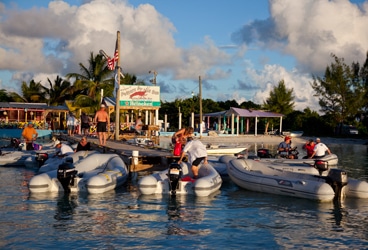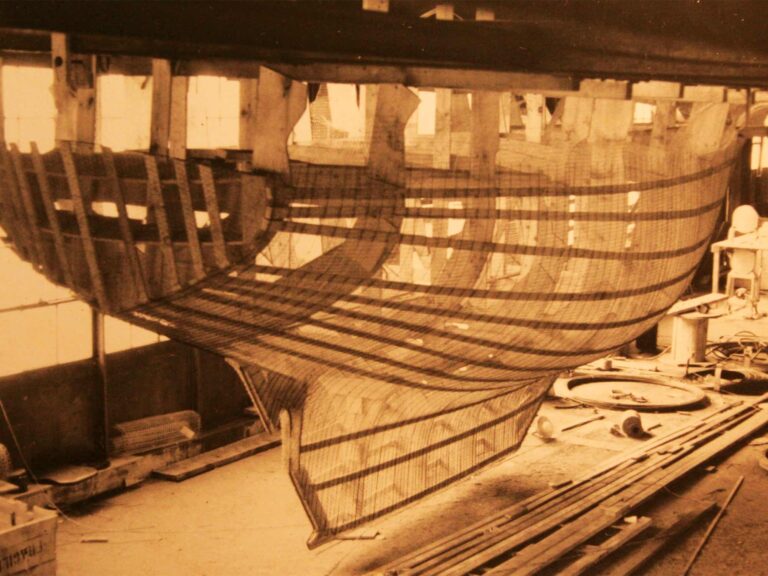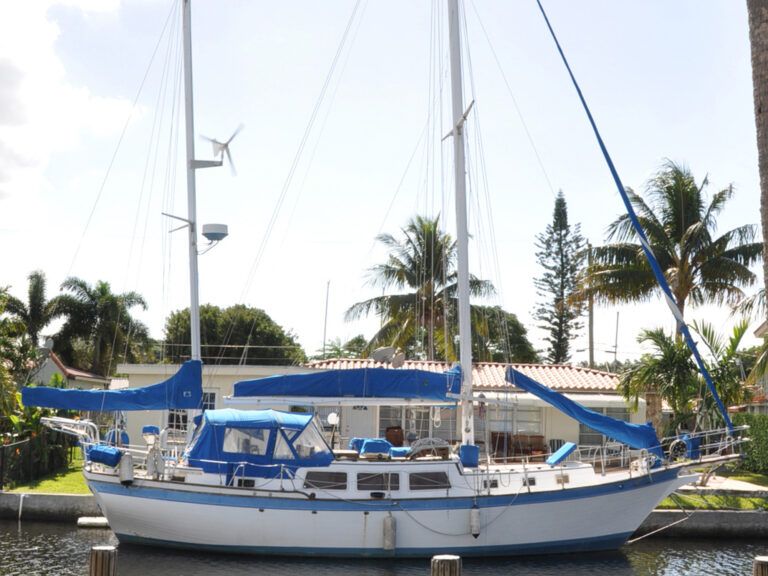
tender
Keeping a dinghy safe and secure, both when you’re in port and at sea, is a valuable seamanship skill for any sailor to hone. I learned this the hard way shortly after entering the charter world as crew.
Fresh to the Virgin Islands, I joined a British yacht. One day when I went ashore to buy groceries, I left the small inflatable on the beach among many others, as instructed. To my horror, it was the target of thieves and was never seen again. “Welcome to the world of yachting,” I was told.
Just as crime is more prevalent in large cities, dinghies are more vulnerable in crowded harbors. Strategies to protect your tender need to be adjusted accordingly, keeping in mind that culprits are just as likely to be other sailors as local people. Reasons for theft range from joyriding to profitable resale, and occasionally you may find yourself in a harbor in which dinghy theft has reached epidemic levels. Your research on a particular area should always include inquiries into dinghy and outboard security, along with questions about any local scams and the recommended preventive measures to be taken.
If signs of risk are evident, always lock the dinghy securely when ashore with a thick chain or wire cable capable of resisting bolt cutters. And be sure to lock your tender to your yacht, even during the day, as it is all too easy to succumb to an afternoon siesta only to awake and find your little boat gone.
In crowded areas, particularly a spot where many dinghies are tied up together at, say, a dock at sundowner time, have a long length of wire or chain at hand to reach to the dock itself rather than locking your boat to that of a friend.
Also, be prepared for occasional damage. Docks and seawalls can be abrasive, so carry a repair kit, along with spare valves. Many sailors have dinghy covers made to fight both abrasion and damage from ultraviolet light.
Examples of dinghy scams include someone untying a dinghy when it’s attached to the yacht or dock, then claiming it was found adrift and demanding a return fee. In some ports, officials will even charge an import duty on a recovered stolen item—a double negative! Or they may charge exorbitant fines for not conforming to local regulations, such as carrying lights in the daytime.
Examine your insurance policy carefully. We’ve found clauses inserted that restricted towing the dinghy more than 25 miles; insisted that the yacht name appear on the tender, so advertising the owners’ presence ashore; and mandated the inscription of our email address on the transom.
**Mind Your Motor
**Outboard motors are extremely vulnerable to theft, with larger models generally more desirable than smaller. Lock your motor with wire, chain, padlocks, or a bar lock to your tender or to the motor mount on your sailboat. You can also deface the engine by spraying it a different color than the manufacturer’s original, which renders theft for resale pointless.
Always remove the wrist safety-shutoff coil when ashore, although it can easily be substituted by an experienced thief. Fuel tanks are also vulnerable and should be similarly secured.
Some cruisers even remove the fuel line and carry it with them in a plastic bag to avoid leakage.
Replacing a fuel tank can be a frustratingly time-consuming and expensive business, as friends found out in both Spain and the Caribbean, where they had to settle for replacements of different size, design, and materials.
It’s best to lift the outboard at night and lock it to the onboard-motor mount. A block-and-tackle system expedites this task and saves one’s back.
Many cruisers also raise their dinghy either horizontally, using a three-point bridle so it lies alongside the ship’s hull, or vertically, using the painter and halyard, and then lower it to the deck.
Davits, which are becoming increasingly popular, allow you to raise the dinghy with the outboard attached.
**Security at Sea
**On a voyage of any distance, or in open waters where the conditions may be rough, lashing your tender on deck is wise and also overcomes the half knot or so of drag that towing the dinghy inevitably produces.
Davits are good to use in coastal waters or calm seas, although if you want to keep the outboard on the dinghy while under way, they need to be strong enough to carry the extra weight. In rough conditions and offshore, the dinghy may not be safe in davits.
Instead, stow it on deck inverted; if it’s an inflatable, deflate it to reduce windage. Always strap it down securely.
When towing a dinghy, use a strong painter securely belayed (at least one full turn around a cleat before figure eights) and a safety line.
Check whether your dinghy tows better with a long or short line or bow bridle; in larger seas, a drogue streamed from the dinghy transom increases stability. Remember to guard against chafe.
Some Useful Tips
Before you buy an inflatable, consider dinghy designs that work for you. For example, a sloping sole, such as is found in a deep-V hull at the bow, may make the boat more efficient under way, but that same design can make it difficult for you to climb forward onto a stern platform. Being able to stand on a dinghy thwart facilitates climbing aboard a sailboat with high topsides amidships or when coming alongside to a boarding ladder. Being able to stow life jackets under a seat or in a lockable compartment is also a useful dinghy feature.
If you’ll often be in the dinghy alone, you may want a tiller extension for the motor so you can move your bodyweight forward to better balance the boat. Also, before setting out, always check to make sure that you have the oars in place and have a dinghy anchor aboard in case the motor dies.
Take particular care at night and watch for others who might be operating without lights or speeding. Remember that those people overserved at the beach bar will be trying to get back to their boats, too.
Liza Copeland is a frequent CW contributor.








